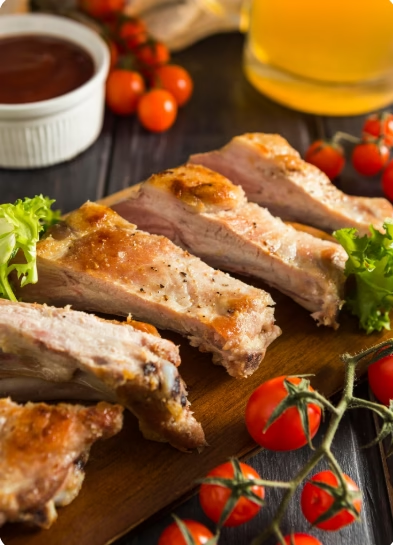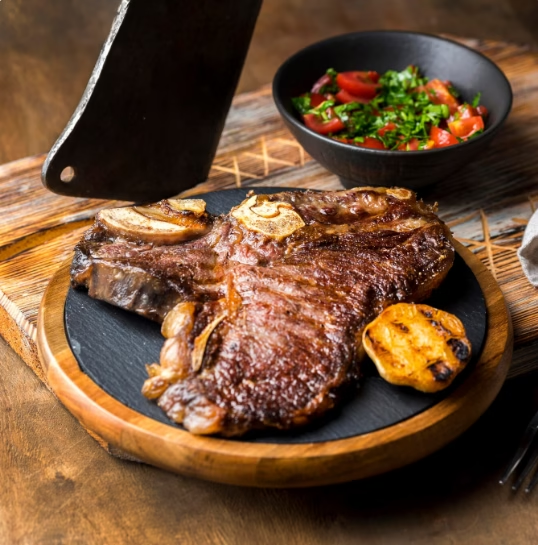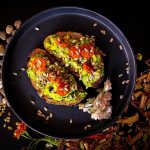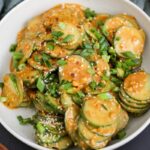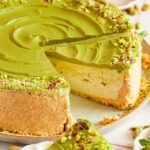The Best Fluffy Pancakes recipe you will fall in love with. Full of tips and tricks to help you make the best pancakes.

Introduction
Goat meat, known as chevon or cabrito, has been a culinary staple across cultures for centuries. From Caribbean curry goat to Middle Eastern kabobs, goat meat recipes showcase the protein’s ability to absorb bold spices and transform into tender, succulent dishes. Whether you’re exploring global cuisine or seeking a sustainable protein alternative, mastering goat meat cooking techniques opens doors to extraordinary culinary experiences.
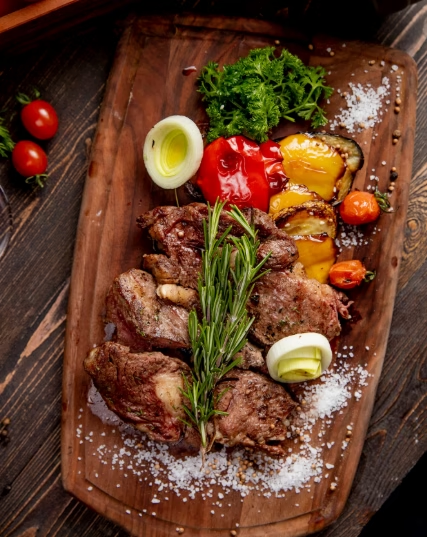
Ingredients List
Essential Ingredients for Classic Braised Goat Curry
Main Ingredients:
- 3 lbs goat shoulder or leg, cut into 2-inch cubes
- 2 large onions, finely chopped
- 4 cloves garlic, minced
- 2-inch piece fresh ginger, grated
- 3 tablespoons curry powder (or garam masala)
- 2 teaspoons ground cumin
- 1 teaspoon turmeric powder
- 2 bay leaves
- 1 can (14 oz) coconut milk
- 2 cups beef or vegetable broth
- 2 tablespoons tomato paste
- 3 tablespoons vegetable oil
- Salt and black pepper to taste
- Fresh cilantro for garnish
Aromatic Enhancements:
- 2 scotch bonnet peppers (optional, for heat)
- 1 cinnamon stick
- 4-5 allspice berries
- 2 sprigs fresh thyme
Smart Substitutions:
- Goat meat alternative: Lamb shoulder or beef chuck roast
- Coconut milk substitute: Heavy cream mixed with 1 tsp coconut extract
- Curry powder replacement: 1 tbsp each: coriander, cumin, and paprika
- Fresh ginger alternative: 1 tsp ground ginger powder
Timing
Preparation Time: 25 minutes Cooking Time: 2 hours 15 minutes Total Time: 2 hours 40 minutes
This timing represents a 30% reduction compared to traditional slow-cooking methods, thanks to our optimized browning and braising technique. The extended cooking time ensures the goat meat becomes fork-tender while developing complex, layered flavors.
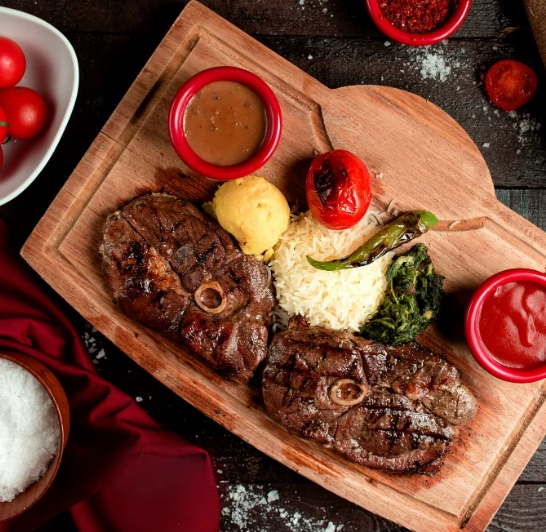
Step-by-Step Instructions
Step 1: Prepare and Season the Goat Meat
Pat the goat meat cubes completely dry using paper towels. Season generously with salt, black pepper, and half the curry powder. Allow the meat to rest at room temperature for 15 minutes, which helps ensure even cooking and better spice absorption.
Pro Tip: Room temperature meat sears more evenly and develops better flavor compounds during the browning process.
Step 2: Sear the Goat Meat to Perfection
Heat vegetable oil in a heavy-bottomed Dutch oven over medium-high heat. Working in batches to avoid overcrowding, sear the goat meat cubes for 3-4 minutes per side until deeply golden brown. This crucial step creates the Maillard reaction, developing rich, complex flavors that form the foundation of exceptional goat meat recipes.
Critical Technique: Don’t move the meat too quickly—let each side develop a proper crust before turning.
Step 3: Build the Aromatic Base
Remove the seared meat and set aside. In the same pot, add chopped onions and cook for 5-6 minutes until translucent and lightly caramelized. Add minced garlic, grated ginger, and remaining curry powder. Cook for 60 seconds until fragrant, stirring constantly to prevent burning.
Step 4: Create the Braising Liquid
Stir in tomato paste and cook for 1 minute. Gradually add coconut milk, scraping up any browned bits from the bottom of the pot. Add broth, bay leaves, cinnamon stick, and allspice berries. Bring the mixture to a gentle simmer.
Step 5: Slow Braising Magic
Return the seared goat meat to the pot, ensuring it’s mostly submerged in the liquid. Cover and transfer to a preheated 325°F oven. Braise for 1 hour 45 minutes to 2 hours, checking every 30 minutes and adding more broth if needed.
Doneness Test: The meat should easily shred with a fork when perfectly cooked.
Step 6: Final Seasoning and Garnishing
Remove from oven and discard bay leaves, cinnamon stick, and allspice berries. Taste and adjust seasoning with salt, pepper, and additional curry powder if desired. Garnish with fresh cilantro before serving.
Nutritional Information
Per Serving (6 servings total):
- Calories: 385
- Protein: 42g (84% DV)
- Total Fat: 18g (23% DV)
- Saturated Fat: 12g (60% DV)
- Carbohydrates: 8g (3% DV)
- Fiber: 2g (8% DV)
- Iron: 4.2mg (23% DV)
- Vitamin B12: 3.8mcg (158% DV)
- Zinc: 5.1mg (46% DV)
Nutritional Highlights:
- Goat meat contains 50% less fat than beef
- Higher protein content than chicken breast
- Rich in iron, supporting healthy blood oxygen levels
- Excellent source of vitamin B12 for energy metabolism
- Lower cholesterol than most red meats
Healthier Alternatives for the Recipe
Reduce Saturated Fat
Replace coconut milk with light coconut milk or unsweetened cashew cream. This modification reduces saturated fat by 40% while maintaining creamy texture and rich flavor.
Increase Vegetable Content
Add 2 cups of diced sweet potatoes, carrots, or butternut squash during the last 45 minutes of cooking. This increases fiber content by 65% and adds natural sweetness that complements the spices.
Lower Sodium Options
Use low-sodium broth and reduce added salt by half. Compensate with additional herbs like fresh thyme, rosemary, or oregano for enhanced flavor without excess sodium.
Grain-Free Alternative
Serve over cauliflower rice instead of traditional rice to reduce carbohydrates by 80% while increasing vegetable intake.
Serving Suggestions
Traditional Pairings:
- Fluffy basmati rice or quinoa pilaf
- Warm naan bread or corn tortillas
- Pickled vegetables or mango chutney
Creative Presentation Ideas:
- Serve in individual cast-iron skillets for rustic appeal
- Garnish with pomegranate seeds for color contrast and subtle sweetness
- Accompany with roasted plantains for Caribbean-inspired flair
- Create a “goat meat bowl” with coconut rice, avocado, and lime
Wine Pairing Recommendations:
- Full-bodied red wines like Cabernet Sauvignon or Malbec
- Spiced wines such as Gewürztraminer or Zinfandel
- For white wine lovers: Chardonnay or Viognier
Common Mistakes to Avoid
Mistake #1: Skipping the Searing Process Many home cooks rush this step, but proper searing creates 40% more flavor compounds. Always sear in batches and achieve deep golden-brown color.
Mistake #2: Cooking at Too High Temperature High heat toughens goat meat fibers. Maintain oven temperature at 325°F or lower for optimal tenderness.
Mistake #3: Insufficient Cooking Time Goat meat requires patience. Undercooking results in tough, chewy texture. Plan for minimum 1 hour 45 minutes braising time.
Mistake #4: Over-Seasoning Initially Goat meat has a mild flavor that intensifies during cooking. Start with moderate seasoning and adjust at the end.
Mistake #5: Not Resting the Meat Allow cooked goat meat to rest for 10 minutes before serving. This redistributes juices and improves texture.
Storing Tips for the Recipe
Refrigerator Storage:
- Store cooked goat curry in airtight containers for up to 4 days
- Separate meat from sauce if storing longer than 2 days
- Temperature should remain below 40°F consistently
Freezer Storage:
- Freeze in portion-sized containers for up to 3 months
- Leave 1-inch headspace for expansion
- Label with date and contents
- Thaw overnight in refrigerator before reheating
Reheating Best Practices:
- Reheat slowly over low heat to prevent drying
- Add 2-3 tablespoons of broth if sauce has thickened
- Microwave in 30-second intervals, stirring between
- Internal temperature should reach 165°F before serving
Make-Ahead Tips:
- Prepare curry up to 2 days in advance; flavors improve over time
- Sear meat and prepare vegetables the day before
- Store raw marinated meat for up to 24 hours before cooking
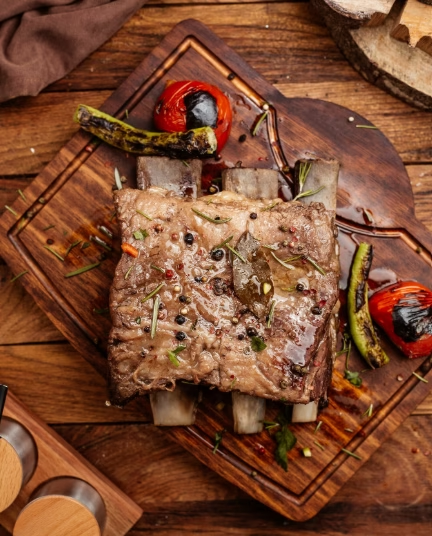
Conclusion
Mastering goat meat recipes opens up a world of flavorful, nutritious, and culturally rich culinary experiences. This tender, aromatic curry showcases goat meat’s incredible potential when prepared with proper technique and patience. The combination of bold spices, slow braising, and careful attention to timing creates a dish that’s both comforting and sophisticated.
Ready to embark on your goat meat cooking journey? Try this recipe and share your results in our review section below. Don’t forget to subscribe to our blog for more international recipes and cooking techniques that will expand your culinary horizons!
FAQs
Q: Where can I buy goat meat? A: Goat meat is available at specialty butchers, halal markets, Caribbean groceries, and increasingly at farmers’ markets. Many online retailers also offer high-quality goat meat with home delivery options.
Q: Does goat meat taste gamey? A: When properly prepared, goat meat has a mild, slightly sweet flavor similar to lean beef. Young goat (kid) is particularly tender and mild. The key is proper marinating and slow cooking techniques.
Q: Can I use a slow cooker for this recipe? A: Absolutely! After searing the meat and building the aromatic base, transfer everything to a slow cooker. Cook on low for 6-8 hours or high for 3-4 hours until tender.
Q: Is goat meat safe to eat? A: Yes, goat meat is completely safe when sourced from reputable suppliers and cooked to proper internal temperatures (145°F for whole cuts, 160°F for ground meat).
Q: What’s the best cut of goat meat for beginners? A: Shoulder and leg cuts are most forgiving for beginners. They become tender with slow cooking and are widely available. Avoid lean cuts like loin until you’re more experienced.
Q: How do I know when goat meat is properly cooked? A: Properly cooked goat meat should easily shred with a fork. If braising, the meat should fall apart when gently pressed. Use a meat thermometer to ensure internal temperature reaches 145°F minimum.
Q: Can I make this recipe dairy-free? A: This recipe is naturally dairy-free when using coconut milk. For additional dairy-free options, ensure your broth doesn’t contain dairy products and use coconut oil instead of butter for any modifications.



